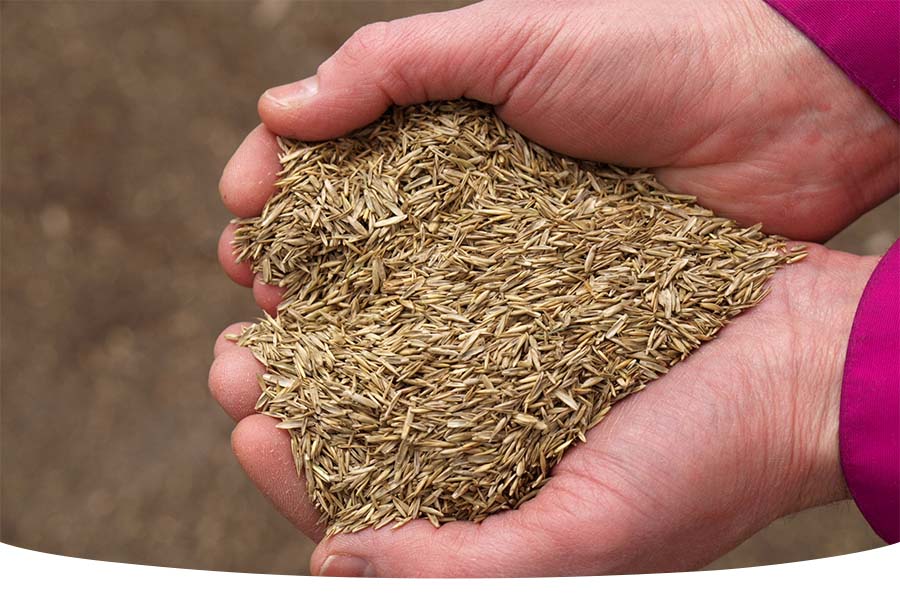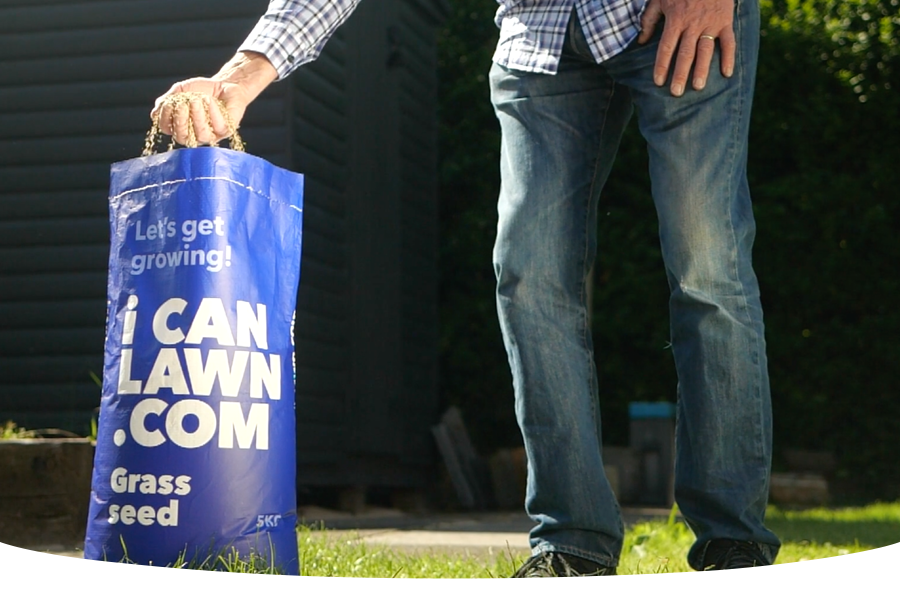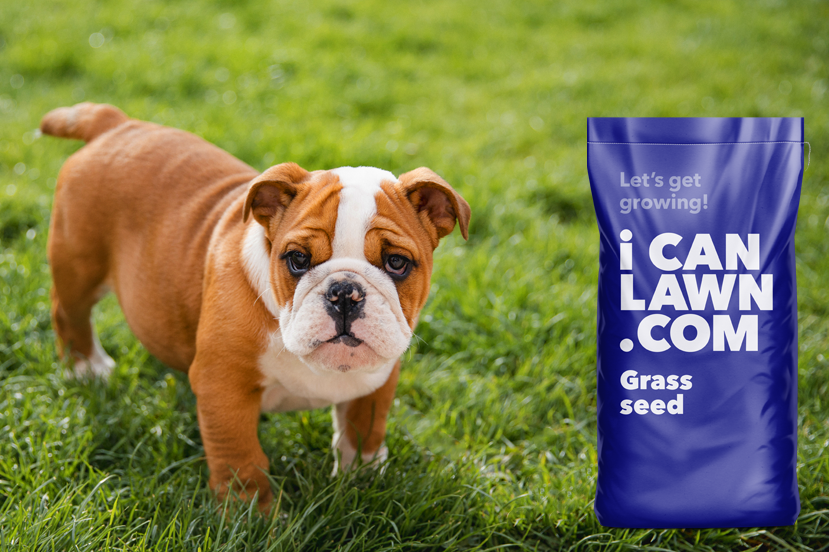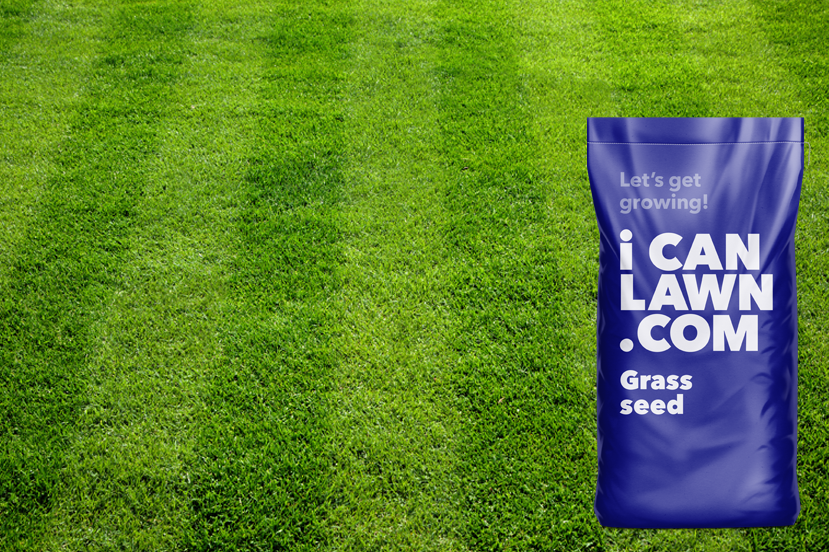Can I sow grass seed in September?
As summer draws to a close you may be thinking that the opportunity to sow grass seed has passed and you will have to wait until next spring to achieve your dream lawn, right? Wrong! You can sow grass seed in September and it might even produce better results!
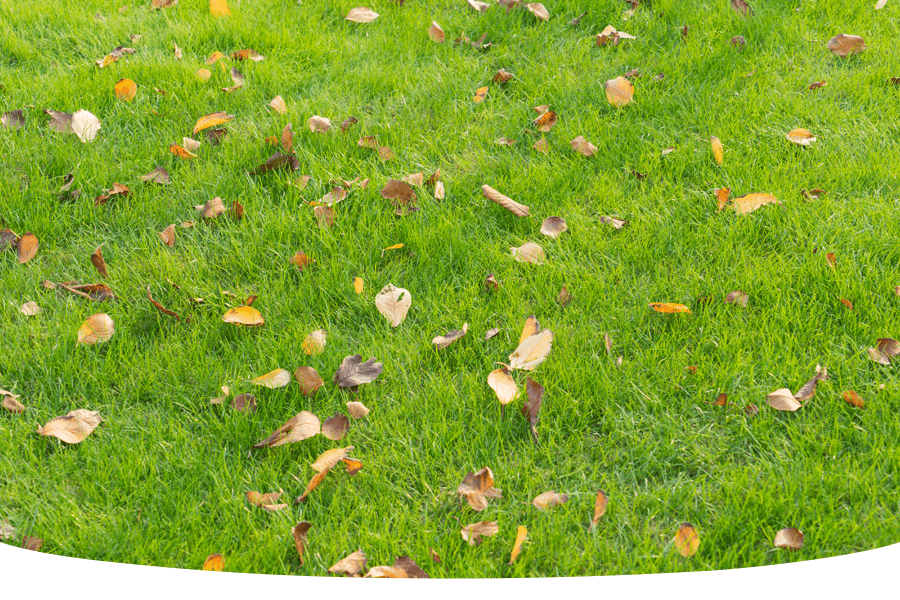
Sowing grass seed in September
By September, most of our very hot weather has passed. And your lawn should be beginning to make a recovery from a heatwave or drought. Yet, you may have some areas of yellow or some patchiness that you would like to sort out before the cold weather sets in. Well, you are in luck, as you can sow grass seed in September!
September offers a mix of good temperatures and rainfall for grass seed
If you're still wondering, "Can I sow grass seed in September?" then let us assure you that September offers the very best of ‘back to school weather’. Whilst temperatures will cool slightly, they are still warm enough for grass growth to occur (10 degrees and above). Rain showers are also common this time of year to help with watering your new seed. This is important since it will need to be watered every day for six weeks after sowing.
Birds are more likely to leave your grass seed alone in September
Birds will also likely leave grass seed alone and be busy foraging for food elsewhere this time of year. This means your lawn will be uninterrupted, so it can achieve thick and full coverage. So whether you're planning to overseed an existing lawn or sow a new one, September is the perfect time!
Pick the right grass seed
The key to successfully sowing grass seed in September is to pick the right seed. If you are overseeding, don’t worry too much about trying to match the grass you already have. Nearly all lawns in the UK are a blend of perennial ryegrass and fescue, which are grass seed species you will find in our range of grass seed mixes.
- We have grass seed mixes suited to busy lawns that get used by the whole family
- We also have a hard-wearing seed mix that's ideal if you have pets.
- If your lawn suffers from shade or clay soils, you’ll need a more specialist blend of grass seeds.
- And our Super Fine Luxury Lawn will help you achieve the statement lawn of your dreams!
Speed it up
New grass takes 6-8 weeks to fully establish, but you can use a pre-seed fertiliser to help speed things up. Our Pre-Seed First Feed can be applied before seeding and feeds your new seedlings the nutrients they need to build strong roots fast and fend off any early diseases. Pre-Seed First Feed can be applied at a rate of 70g per m2 and can be spread by hand or using a seed spreader. We also have a spreader setting guide to help you with this. Ensure to water in your lawn feed thoroughly until it disappears. Once it is dissolved and has started working into your soil – you can sow your seed!
Patch it up
If your lawn is in generally good condition, bar a few patches left behind after all the summer fun, then September is an ideal time to get those bald spots repaired before winter. If dog pee burns also damage your grass, you can also use this method to repair them.
Repairing patches in your lawn is a quick and simple process that can help get your lawn back on track. Remember when repairing patches to fill in any dips with topsoil instead of compost, as compost will break down over time. Fill in the patches until they are level. Use the back of your rake to help you patch perfectly level with the rest of your lawn. Sprinkle the seed generously and keep the patches watered for the following six weeks!
Protect your new lawn and keep it leaf free!
When your new grass hits the 6-8 week mark and is 5-7cm long, it will be ready for its first mow. Make sure to mow on the highest setting of your lawnmower, gradually reducing the height of the blades depending on the level of use your lawn gets.
For a high traffic family or general use lawn, keep the height around 20-40mm. For a showstopping ‘don’t walk on the lawn’ lawn, aim for 10-20mm. To keep your lawn healthy throughout the colder months that will be coming up, we recommend using our Winter Remedy. This lawn food will help protect against frost, snow and any winter-borne diseases. Try your best to keep your lawn leaf-free throughout the autumn to avoid encouraging any extra moisture retention on your lawn as this can lead to disease.
To continue to keep your lawn healthy make sure to regularly feed it and keep it weed, moss and disease free. If you are wondering if you can sow wildflowers during September, why not check out our helpful guide on this.




